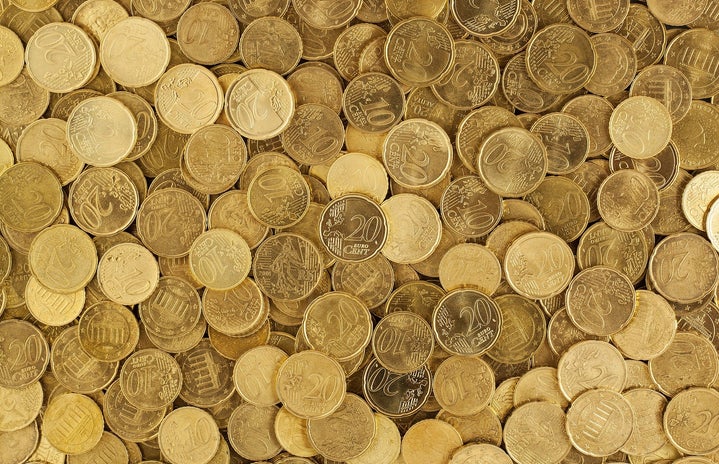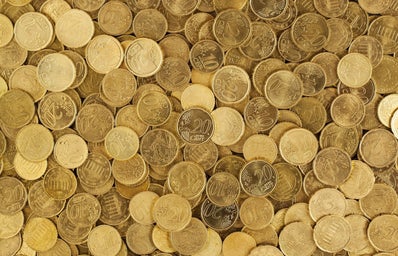These past couple of months, online spaces have thrummed with mentions of the term “NFT.” Perhaps, your Google News feed reported that Gorillaz has recently entered the NFT market, or maybe, you chanced upon an article in your Twitter sidebar discussing the ramifications of Nyan Cat selling for $600,000. Perhaps, you learned that an NFT of Lebron James dunking sold for $200,000 on NBA Top Shot. But what exactly does it all mean?
What are NFTs?
In a sense, non-fungible token, or NFT for short, is a self-defining term. To understand what NFTs are is to understand the separate components that make up the phrase. Fungibility refers to an item’s ability to be exchanged with an item of equivalent value. For example, two $1 bills are fungible because they are worth the same amount. By exchanging $1 bills with a friend, I neither lose nor gain anything of value. Another example of fungibility is bitcoin, as every bitcoin is worth the same amount. In contrast, nonfungibility refers to a state of uniqueness. Non-fungible items cannot be exchanged with items of equivalent value because they are entirely unique. They cannot be replicated. According to dictionary.com, a token is a tangible representation of ownership, fact, quality, or feeling, but specifically, in reference to cryptocurrency, a token is a representation of “tradable assets or utility within a blockchain (Investopedia).” NFTs can take the form of any type of digital file. They can be JPEGs, MP3s, GIFs, etc. In total, an NFT is a unique digital entity offered on a blockchain that can represent either a physical or digital item.
Blockchains, the technology that powers cryptocurrencies such as Bitcoin and Ripple, are “decentralized digital leger[s] that [are] incorruptible, unfalsifiable and indestructible” (Aki). Blockchains are extremely secure because all items on the blockchain are encrypted with codes unique to them, embedded with information detailing their transactional history such as where items were sold or bidded, and who bought and sold them. Furthermore, every transaction is copied to every ledger on the blockchain.
Blockchains record information about transactions through distributed levers, meaning that instead of there just being one master history of the chain’s transactions, everyone within the blockchain receives a copy of the chain’s transactional history (Versace). These chains are then powered by a series of complex calculations that ensure that the values within the chain remain consistent and are used to generate codes for new items. When items are added to the blockchain, they undergo a process called minting, where new blocks are created through the completion of complicated computational puzzles.
These provisions make it difficult to copy an item on the blockchain because not only would the person attempting to falsify a blockchain item need to replicate the individual code of the item, but they would also have to manipulate the entire blockchain in such a way that all of the totals would remain consistent. In summary, NFTs are digital items with distinguishing properties due to being part of a blockchain.
As elements of the blockchain, NFTs hold a number of unique properties such as their indivisibility, and indestructibility. An NFT cannot be sold in parts – it must be sold as a whole item. NFTs also cannot be destroyed because that would interfere with blockchain calculations. Other properties that make them appealing, is that their metadata is customizable – they can be edited to include information about the product such as labels describing the type of product or service it is or represents, or signatures.
Why Do People Want NFTs?
NFTs appeal to three groups of people: collectors, business people, and artists. Collectors are especially drawn to NFTs because of their authenticity and exclusivity. An NFT is different from a mere JPEG or GIF, because it is not a copy of the thing, but a representation of its essence. An NFT is the digital equivalence of having an original piece of art. It is owning a digital moment. Moreover, unlike a physical painting, an NFT cannot be forged. In order for a fake to sell as an NFT, it would have to have the same metadata as the original, which is impossible. This feature also makes it an attractive means of verifying the transaction of tangible items and decreases the risk of fraud. Various businesses are considering integrating NFTs and blockchain technology into their supply and distribution chains in order to make these processes more transparent.
Some artists are also drawn to NFTs because they eliminate the need for middlemen to facilitate their transactions, and thus, allow creators to gain larger royalties through the sale of their products. Moreover, the scarcity of NFT products provides digital artists an opportunity to be valued the same way that traditional artists are. Because it is easy to access and download digital art for free, many people do not value it the same way they do traditional art. Yet because NFTs cannot be reproduced, they are given a status akin to original pieces of art – and as such, can be auctioned off at extremely high prices. Some digital artists are excited about NFTs because they offer a means of appreciating digital art and the potential to make a lot of money. For example, Artist Mike Winkelmann, otherwise known as Beeple, sold Everydays: the First 500 days, a piece of NFT art for $69.3 million at Christie’s last month. Though this is an extreme example of the amount of money to be earned through NFT transactions (afterall, it is currently the highest price for an NFT sold thus far, and Everdays is the third most expensive piece of art sold by a living artist), it speaks to exorbitant amounts of money to be earned by selling NFTs.
Unique NFTs
Today, NFTs are mostly used for curating collections, whether they be art, memes, digital pets, tweets or basketball clips. Currently one of the most popular NFT spaces is NBA Top Shot, where moments in NBA history are preserved as digital tokens. On Cryptokitties, a game on Ethereum’s blockchain, you can buy, sell, breed, and care for unique digital cats. Some cats, especially rare ones, can cost as much as $100,000. On Decentraland, a virtual reality platform, you can buy and sell plots of digital land.
NFTs are also being used to revolutionize supply and distribution chains. Currently, consulting firm Ernst & Young is working on NFT to facilitate wine production and sales.
Environmental Impacts
However exciting NFTs may appear, they are sustained by exorbitant amounts of energy. The mining process used to authenticate NFT transfers and authentication are performed by computers that require a lot of power and electricity to maintain both themselves and their calculations. Most of that energy comes from fossil fuels. Independent researchers have found that the carbon footprint produced by the creation of a single NFT is equivalent to “200 kilograms of planet-warming carbon, [the] equivalent to driving 500 miles in a typical American gasoline-powered car” (Tabuchi). Memo Akten found that a single NFT’s footprint is “equivalent to a EU resident’s total electric power consumption for more than a month, with emissions equivalent to driving for 1000Km, or flying for 2 hours” (Akten). Joanie Lemercier, a French artist discovered that “[his] release of 6 CryptoArt works consumed in 10 seconds more electricity than the entire studio over the past 2 years” (Lemercier). According to Bank of America, “$1 billion in inflows into bitcoin uses the same amount of energy as 1.2 million cars.” Though Ethereum has spent several years working on a cleaner and more efficient energy model called proof-of-stake, it is unclear when it will be finalized (Barber).
All in all, there is reason to believe that NFTs in their current form are harmful to the environment. Lemercier worries that the “The CO2 emissions, combined with a steady growth of consumption is pushing us towards a climate apocalypse” (Lemercier).
Art Theft
Though blockchains are said to be secure, given the anonymity of the internet, it is difficult to ascertain whether or not the person selling an item created it, or has been given permission by the artist to do so. As such many digital artists have found their art stolen and being sold on NFT platforms such as Twinci and OpenSea. In response, a number of digital artists have started either privateing their social media accounts and restricting content. While others, recognizing patterns have begun to circulate blocklists of bots, like @tokenizedtweets,that create NFT codes for tweets and share them on NFT marketplaces.
Rusian artist, Weird Undead was alerted that her art was on OpenSea when she saw a mention for @tokenizedtweets, beneath one of her recent posts (Purtil). Upon contacting OpenSea, they removed the item, but nonetheless, the lack of identity verification and the ease with which digital items can be tokenized leaves digital artists especially vulnerable to fraud.
All in all, NFTs have the potential to do a lot of good, as well as bad. They reshape our social realities by blurring the lines between virtual and tangible, and redefine the value of digital files. But they are also hazardous to the environment and to artists. NFTs are exciting, yes, but they are also works in progress. Both security and ecological impact will improve in the future, but in the meantime, we must grapple with the current consequences of producing NFTs. Is a cute Cryptocat worth 200 kilograms of planet-warming carbon?


